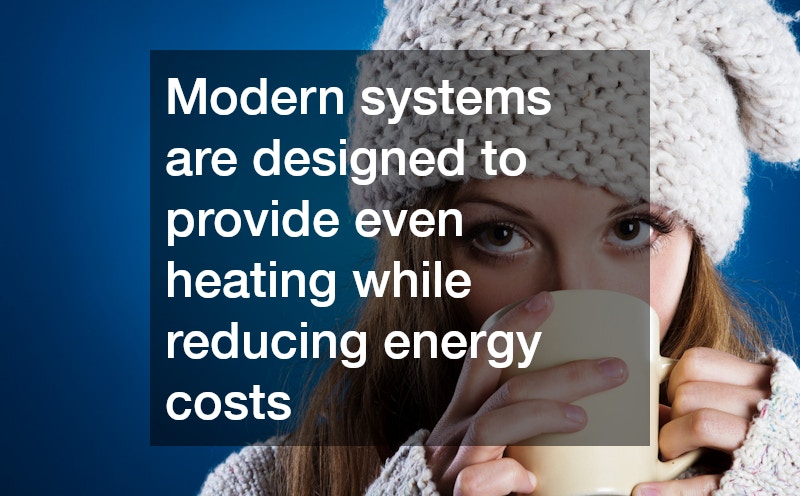

Keeping your home warm during the cold months starts with a well-functioning furnace. If you’re dealing with a broken furnace, acting quickly can prevent further damage and costly repairs. In some cases, furnace replacements may be the best solution, especially for older systems that struggle with efficiency or require frequent fixes. A new furnace can significantly improve energy savings and home comfort.
Regular furnace maintenance and repair are key to ensuring your heating system operates smoothly throughout its lifespan. Scheduling routine service with skilled furnace fixers helps catch issues early, such as clogged air filters, malfunctioning thermostats, or unusual noises. These common furnace issues are often signs of wear and tear but can be resolved quickly with expert care.

If your furnace is beyond repair, considering a replacement ensures uninterrupted comfort. Modern systems are designed to provide even heating while reducing energy costs. Whether you need repairs or a full replacement, trusted professionals can assess your system and recommend the best solution.
Don’t wait until the cold sets in. Invest in regular maintenance or explore furnace replacements to keep your home warm and safe all winter. Experienced technicians can address all your heating needs with precision and care.
Any commercial or private building needs all of its systems in good shape and working well so the building is safe, pleasant to live in, and efficient with its utilities. Anything from its wall insulation to its plumbing and electrical wiring must be in place and working well, and one utility that needs particular attention is the heating and cooling (sometimes known as HVAC), and commercial heating systems may sometimes fail or leak a lot of air, costing more money in the long run due to inflated electric bills. Heating repair, then, can not only restore a faulty system but will save a commercial building’s owners, or a homeowner, the expenses of running a damaged system. Sometimes, money savings can come from fixing drafty windows or bad wall insulation as well. Commercial heating and cooling systems need maintenance and repair every so often, or in the case of a very old system, residential heating or commercial heating and cooling systems will have to be replaced entirely with newer, more efficient ones. Any homeowner or commercial building owner must know what signs to look out for, and know when the time has come to contact HVAC companies or AC repair to get a system back in working order.
Commercial Heating and Bills
As mentioned earlier, a faulty commercial heating and cooling system may cost extra money in the long run if it does not get repairs, and the same can be said for residential cooling and heating systems as well. After all, in the case of commercial buildings, HVAC systems may account for 40% to 60% of the total energy consumption, so a faulty system can rack up huge electric bills in a hurry. Where does this extra expense come from? For one thing, if a building’s windows and doors are drafty, or if the building’s insulation is worn out, the building will lose too much of its warm air in winter or cool air in summer, so the HVAC system has to work overtime to keep replacing the lost air, and this uses extra electricity and wears out the system too fast. Even having uncovered windows in summer may affect temperature, since warm sunlight can heat up a home too fast and force the air conditioning to turn back on too often. Often, merely buying drapes or shades can help with this, and drafty windows or doors should be repaired or replaced at once.
Other types of damage can wear out a system and disrupt its climate control efforts. If air vents become clogged with dust, pet hair, and other grime, air flow is restricted, and the HVAC system will keep pumping more air to try and cool down or heat up a room, but the air flow won’t allow it. Worse, squirrels may infest a building and build their nests in air ducts, seriously blocking air flow, and these ducts may tear and leak air, reducing the air flow into rooms. Deeper in the system, where homeowners can’t reach, blower fans may become coated with grime over time, and this reduced their efficiency, and weakens the entire system. Finally, simple age can harm a system’s efficiency; older models are not up to modern energy usage standards, and they may not have computerized regulators for their work schedule and energy use. Some buildings may have heating and cooling systems 20 years old or older, and this can be a problem.
Fix It
Any homeowner can clear debris from a vent, but otherwise, hiring an HVAC contractor will be necessary to repair or overhaul a commercial heating and cooling system, or a home’s HVAC utility. Repair workers can clear out squirrel and rat nests in air ducts, fix holes and tears in air ducts to restore air flow, clean off or replace the blower fans, and clean up or repair an outside unit. If a system is very old, it may be more cost effective to overhaul the entire thing, and contractors will need some time to remove the old, worn out system and install a new one. This may be costly, but it will save money in the long run, and the new system will be stronger and have more features than the old one, such as computerized regulators and programmable schedules.